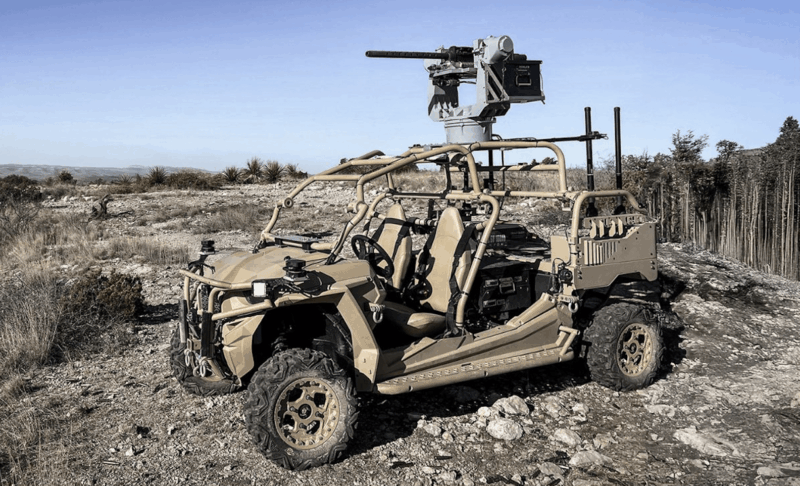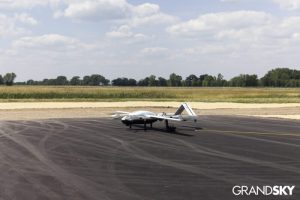Target Acquired: Autonomy, AI, and the Future of Combat
What if the next brilliant military strategist isn’t a human at all, but an algorithm? The world stands on the brink of a revolutionary shift in warfare. Artificial intelligence (AI) and autonomous systems have become the “secret weapon” driving headlines, military budgets, and heated debates among global defense ministries. This guide explores how autonomy and AI are reshaping combat protocols, merging expert insights with real-world trends, and providing a glimpse into the future of security and power.
The New Era of Warfare: Where Drones, AI, and Autonomy Intersect
Envision James Bond battling Skynet’s Terminators, with tactics borrowed from Call of Duty, except the real “players” consist of drones, algorithms, and sophisticated command networks.
Autonomous systems—spanning agile quadcopters to sleek, marine drones—are becoming common. Militaries around the globe deploy target drones to replicate adversaries, evaluate defenses, and even execute surveillance or attack tasks, often with minimal human direction.
Key trend:
The military drone market is burgeoning, with projections showing global sales rising from approximately $42 billion in 2025 to nearly $90 billion by 2030. This growth is driven by:
- Significant advancements in machine learning, edge computing, and sensor capabilities.
- Continual pursuit of force-multiplying solutions that mitigate risks to human soldiers.
- The ever-shifting dynamics of modern warfare, up close in Ukraine and other hotspots.
Target Drones: The High-Tech Warriors
In modern military training, *target drones* have replaced traditional pilot dogfights in the sky. These autonomous units—flying, rolling, or swimming—mimic enemy threats during complex military exercises, safeguarding real pilots and assets.
Features of note:
- **Autonomous flight modes** capable of replicating enemy movements.
- Simulation of stealth characteristics and radar cross-sections, providing formidable targets for both aircraft and air defenses.
- Extreme maneuverability, employing unpredictable tactics akin to real opponents.
Usage of these drones extends beyond the skies; ground and sea-skimming drones prepare militaries for diverse threat scenarios, functioning like robotic performers that challenge defense systems, allowing humans to advance.
Market insight:
The target drone market is set to grow by 8.4% annually, anticipated to reach $13.9 billion by 2034.
The Emergence of “Thinking” Weapons: AI at the Forefront
While memes of rogue “AI drones” exist, the rise of AI-assisted targeting systems focuses on enhancing speed, accuracy, and adaptability.
How AI Transforms Warfare:
- **Computer vision** allows drones and systems to swiftly discern between enemy figures and civilians.
- **Automated target acquisition** through algorithms sorts vast sensor data instantaneously, prioritizing threats and even suggesting actions quicker than human operatives.
- *Swarming strategies*: Coordinated efforts of numerous drones create radar confusion, leveraging unpredictable movements managed by AI “hive minds.”
Case in point:
Bryan Bockmon, CEO of AimLock, discusses systems where autonomy plays a crucial role in split-second situations—whether engaging missiles or intercepting rogue drones in the air.
Defending Against Swarms: Advanced Counter Technologies
As the potential of autonomous weaponry grows, equally sophisticated counter-drone technologies have emerged.
- **Radio-wave “energy weapons”:** The British Army has tested these devices, capable of disabling over 100 attacking drones—comparable to a high-tech ghostbusting scenario using radio frequencies.
- **AI-driven counter-systems:** Advanced software updates improve radar and missile systems to autonomously detect and neutralize threats in real-time.
Fun fact:
The largest recorded exercise neutralized two full drone swarms, marking a new milestone in counter-swarm tactics.
The Regulatory Race: Navigating Laws, Ethics, and Global Dynamics
The discourse around autonomous combat also involves rapidly evolving rules and regulations.
In the United States:
- The *Leading Innovation in Flight Technology (LIFT) Act* seeks to accelerate approvals for beyond visual line of sight (BVLOS) drone operations, supporting local programs, and integrating AI to enhance bureaucratic efficiency and modernize safety measures.
- Policymakers express concern: “China produces significantly more drones than the U.S.,” intensifying the drone autonomy race.
On the global stage:
- Geopolitics and trade controls: The U.S.–China tensions have led to high tariffs on Chinese drones, trade restrictions, and reorganized supply chains. While Western drone costs rise, there is a surge in local production and research initiatives.
Ethical considerations:
The question, “Should machines decide life-or-death matters?” transitions from science fiction to a serious point of discussion among regulators and strategists worldwide.
Expert advice:
Businesses and government agencies should monitor forthcoming FAA and international regulations, particularly regarding AI in targeting, data security, and civilian applications. Regulatory ambiguity could disrupt billion-dollar projects instantly.
Stories from the Field: Algorithms and Adrenaline
Across battle zones from Ukraine to contested skies in Gaza, drone autonomy’s impact extends into the headlines and operational reports:
- Ukraine: Drones, from affordable commercial models to high-end suicide UAVs, redefine artillery targeting, intelligence gathering, and electronic warfare.
- Middle East: Independent drones perform recon, supply drops, and deploy arms in conditions too perilous for human pilots.
- Maritime advances: Marine drones enhance tasks like mine-clearing, anti-submarine warfare, and monitoring amidst heavy naval traffic.
Client story:
A European defense agency significantly improved radar capabilities using swarm-simulating target drones, honing tactics and technology through AI-enhanced drills until interception abilities achieved near perfection.
Anticipations for the Future: Five Key Predictions
- The norm of Human-AI collaboration: The most adept militaries will empower soldiers with autonomous colleagues, enhancing decision-making capabilities dramatically.
- Swarming and countering swarms: Future conflicts will revolve around excelling in swarming tactics and effectively counteracting them, opening a new chapter in electronic confrontations.
- “Algorithmic arms control” debates: The level of acceptable autonomy, human oversight points, and accountability will become central points of discourse in governance.
- Cross-sector influence: Technologies honed in military contexts will increasingly benefit civilian applications, from logistics to disaster management.
- Shift in military roles: Increasing demand for data scientists, AI ethicists, and systems engineers signals a transformative shift in defense sector career paths.
The Human Element: Our Team’s Commitment
At [Your Company Name], our fascination isn’t only with technology but with ensuring AI systems are trustworthy, ethical, and effective. We believe critical decisions remain a human responsibility, despite the computational speed of machines.
Our values:
- Openness: We elucidate our systems’ workings from design through testing, upholding trust.
- Collaboration: Our partnerships with policymakers, defense entities, and academics emphasize integrating ethics and human oversight.
- Continuous Improvement: Reflecting on real-world feedback and new threats ensures our rapid adaptation.
Client experience: A NATO nation’s counter-drone squad enhanced its performance during live exercises using our AI-supported systems, reporting better capabilities and peace of mind.
A Final Thought: Humor and Relevance in Pop Culture
Jokes about your vacuum cleaner taking over the world symbolize a rapidly evolving reality:
- The drone from *Call of Duty*? Now it’s closer to reality, just without the multiple lives.
- Movies often paint AI as villainous; today’s tech uses such innovations to save lives by neutralizing hazards.
- Memes show dogs chasing drones. The upcoming models might evade the pursuit while monitoring the environment.
While the humor is light-hearted, the implications are substantial; achieving a balance of oversight and innovation determines safeguarding future security. Our commitment is to ensure that the tale of advanced tools is one humankind controls.
Are you ready to partner or explore our latest autonomous defense solutions? Reach out to experience cutting-edge AI-driven security—progress waits for none.
This guide provides a comprehensive look at one of the significant issues of the upcoming decade. It’s essential reading for those with a keen interest in security advancements, industry professionals, or anyone intrigued by evolving robotic technologies. Let’s shape the future responsibly and collaboratively.













